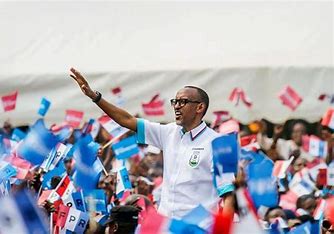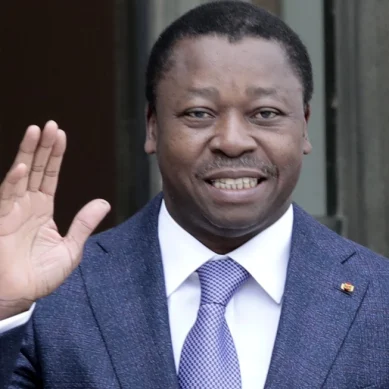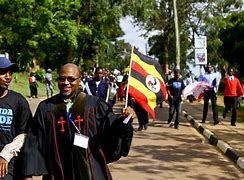
The arguments over historical visions advanced today are remarkably similar to debates at the time of decolonisation forty years ago. It is, therefore, worthwhile to review some aspects of Rwanda’s recent history that have tended to be ignored in these debates – then and now.”
By the end of the nineteenth century, Rwanda was already a centralised, hierarchical kingdom with important class distinctions. In many parts of what is today Rwanda, however, local populations had not been fully incorporated into the Rwandan state, and the distinctions of Hutu and Tutsi were not significant. Clan, lineage and family ties were more important for political interaction.
Even within the Rwandan kingdom, relationships between Tutsi and Hutu varied. In some areas, significant numbers of Tutsi and Hutu lived similar lifestyles, keeping cattle and cultivating their fields -many Hutu (but not all) in precolonial Rwanda owned cattle, and many Tutsi (but not all) practised agriculture.
Colonial rule did, of course, have important effects on Rwandan politics and society. Although German and later Belgian colonial rulers did not create state domination and Hutu/Tutsi inequality – for these already existed – colonialism did significantly alter the reach of the state, the forms of domination, and the nature of political competition.
Particularly onerous demands of the colonial state and its chiefs fell most heavily – and in some cases exclusively – on rural cultivators classified as Hutu. This situation accentuated ethnic distinctions and gave them a cultural meaning different from earlier periods.
Moreover, Rwanda’s European colonial rulers were intent upon preserving what they saw as “traditional” structures of power in which Tutsi aristocrats ruled over Hutu peasants. This model, based on colonialist interpretations of monarchical structures in the centre of the country, was not accurate even for central Rwanda, much less for regions on the periphery.
Nevertheless, the Belgian administration in Rwanda, even more than in most colonial systems, sought to structure social order, to rationalise and standardise heterogeneous social relations and to reinforce the powers of the “natural rulers.”
In the 1930s, they issued identity cards that indicated a person’s ethnic category. These cards then became a tool of the state used to determine an individual’s life chances. Again such measures did not create ethnicity; instead they served to mould its social salience.
Thus, in colonial Rwanda, Hutu came to be classified as second-class citizens. This was starkly illustrated in the allocation of new colonial social and economic resources. For example, Hutu had dramatically fewer opportunities to attend school and achieve post-primary education than Tutsi, and they came to be excluded almost entirely from high-level administrative positions. Twa were discriminated against even more intensely, and few had opportunities to attend school.
Colonial rule, then, provided the resources, imposed the structures and asserted the pressures that helped shape the state-building process in a particular way. A major effect of this process was the propagation of a corporate vision of ethnic groups. Tutsi, Hutu and Twa came to be viewed as internally homogeneous groups and their members came to be treated in distinctive ways by the state. This made groups that had previously shown more internal flexibility appear more like biological groups.
The ideology constructed to rationalise this process portrayed the groups corporately-as racially, culturally, and historically different-and the three characteristics were often seen as virtually synonymous. Such an intellectual framework was premised on (and in turn advanced) the view that the Tutsi were superior both in intelligence and in political acumen, as reiterated in virtually all colonial documentation on Rwandan social organisation.
But this ideology was constructed not just by Europeans; it emerged as a joint undertaking between Tutsi powerholders and the colonial authority. The point is made forcefully in a recent analysis by Alison Des Forges.
As she explains, the creation of a myth that glorified and exaggerated the role of Tutsi in founding Rwandan state structures and exerting control over Hutu was a “collaborative enterprise,” involving European administrators, missionaries, and scholars as well as Rwandan chiefs, poets, and historians at the royal court.
Thus, the vision that colonialism disrupted a perfectly harmonious system does not concur with the record: precolonial Rwanda was a state with serious social inequalities and some powerful political actors used their power arbitrarily and abusively. There were Hutu who were dispossessed of their cattle by Tutsi, for example. But there were also Tutsi who were despoiled of their cattle.
Positions of great power and prestige were held mostly by Tutsi, but there are also examples of influential Hutu sought as allies by the royal court. And while assassination of individuals was part of the political process (although perhaps exaggerated in the drama of court poetry), mass murders of people on the grounds of ethnic category did not occur in precolonial Rwanda.
These precolonial state structures were reshaped by the changes wrought during colonial rule and the emergence of a “dual colonialism” that benefitted both European and Rwandan power-holders. In the long run, these transformations helped to create the conditions for widespread rural discontent at the end of the colonial period.
In the 1950s, as the prospect of independence from Belgium loomed on the horizon, a Hutu counter-elite began to pressure for democratisation. Calling for an end to the monopoly of political life by a few powerholders, a group of activists issued a “Hutu Manifesto” in 1957.
Although its demands were moderate – equality of opportunity and improved access to education, employment and social services for all Rwandans regardless of ethnic background or social rank – the Hutu Manifesto used racialist terminology, mirroring the ideologies of the time.
Such calls for change provoked a backlash among prominent members of the Rwandan power structure: their intransigent attitudes served to polarise further the political factions. In May 1958, a group of conservatives at the royal court responded to the Hutu Manifesto in arrogant, dismissive language. In a public statement, these notables wrote that there was no basis for brotherhood and cooperation between Hutu and Tutsi, since many years ago Tutsi had subjugated Hutu by force.
Their racialist language fore-shadowed the language that would be used more than three decades later by Hutu extremists. This intemperate response by court conservatives contributed to fears and anxieties that were already escalating.
For in response to multiple pressures for change, the High Council of the Country was preparing to carry out a programme of redistributing land – even though the High Council had not even one Hutu among its members. Then, in an open letter to the king and the High Council, a group describing themselves as “fifteen elderly Tutsi, grand clients of the court” warned that if the land distribution were to proceed, “there will be revolts in the whole country and you are going to provoke the death of those who have land and those who do not, such that those who have the possibility to do so will be obliged to emigrate towards the British territories.”
Mutatis mutandis, such concerns proved prescient of later events, both in the 1960s and in the 1990s. Within this highly charged political landscape, people in power feared losing their privileged position and being mistreated by former subjects. Hutu activists experienced harassment, and some feared they would be targeted for liquidation.
Late in 1959, recently recognised political parties began to organise publicly; tensions grew as Rwandans awaited a report by the Belgian government about the programme for elections in preparation for decolonisation.
On November 1, a Hutu sub-chief (one of only ten in the country) was assaulted by a gang of Tutsi youths. Rumours spread that he had been killed and this almost instantaneously sparked rural uprisings in several parts of the country: gangs of Hutu roamed the countryside, chasing out Tutsi inhabitants and burning houses.
Tutsi generally felt threatened. But in these early conflicts, much of the violence was aimed against those who held administrative posts (such as chiefs or sub-chiefs) and members of the Tutsi aristocracy, rather than directed indiscriminately at all Tutsi. That came later, when political action caught up with the rhetoric of corporate views of ethnicity.
The Belgian administration declared a state of emergency and brought in troops from the then Belgian Congo in attempts to keep order, separate the warring parties and protect leaders who were threatened. Political violence had escalated dramatically; many observers of the time note that the royal armies of the past had been re-mobilised and Hutu leaders and officials in the Belgian administration feared that the royal court was preparing to eliminate its Hutu opponents.
In these circumstances the pervasive political discourse increasingly projected corporate views of ethnicity. But it is noteworthy that political action diverged significantly from this verbal contestation. In the conflicts associated with the Rwandan Revolution of 1959-1961, rural dwellers often distinguished powerful and wealthy Tutsi from Tutsi commoners. The primary targets of attack were those who were in a position of power.
Similarly, in the political conflicts of the 1950s and electoral battles of 1960 and 1961, moderates on both sides emphasised the importance of addressing the needs of all disadvantaged groups in Rwanda -the poor and powerless were not just Hutu but Tutsi and Twa as well.
In fact, the leaders of two of the most moderate parties, Association pour la Promotion Sociale de la Masse (APROSOMA) and Rassemblement Democratique Ruandais (RADER) – the first primarily Hutu, the latter primarily Tutsi-tried to downplay ethnicity and make an appeal to the “common people”- whether Hutu or Tutsi. Moderates were also present during the early 1990s; but then, intense cleavages that echoed earlier political divisions led several of the new political parties to split between the “moderate” and “power” factions. This was to be a critical factor in the subsequent political realignment preceding the genocide.
All the same, in the late 1950s as in the early 1990s, an ethnic appeal still resonated strongly in certain areas of the country and among certain social strata. One important reason for this was that almost all of the high political positions in the national government were monopolised by one group; most of those who were powerful and wealthy in the 1950s were Tutsi. Then, as in 1962 under a post-independence, Hutu-dominated government, only a small proportion of the group said to be in control benefited directly from positions of power.
Nonetheless, one principal strategy for mobilising a political following was to consolidate the mental image of a corporate view of ethnicity. The political extremists sought to tag all members of the opposing social category with the responsibility of the actions of a few. Thus, in 1996 when all Hutu became portrayed as genocidaires, so too in 1959 all Tutsi came to be portrayed as monarchistes; and in 1994, all Tutsi were labelled as agents of an “evil” Rwandan Patriotic Front (RPF).
– A Tell report / By Catharine Newbury, Ethnicity and the Politics of History in Rwanda











